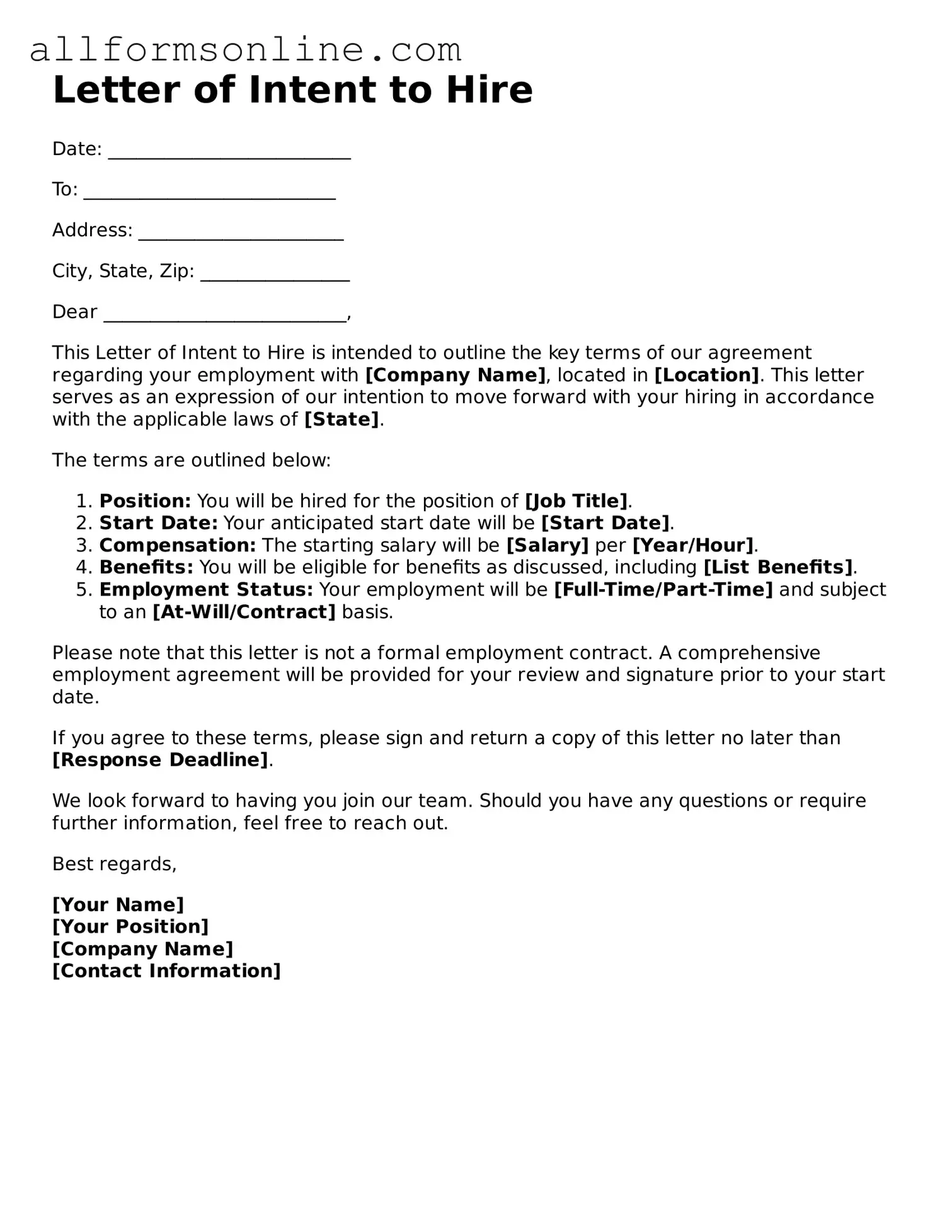What is a Letter of Intent to Hire?
A Letter of Intent to Hire is a document that outlines an employer's intention to offer a position to a candidate. It serves as a preliminary agreement before the formal employment contract is finalized. This letter typically includes essential details such as the job title, salary, and starting date, providing clarity for both parties.
Is a Letter of Intent to Hire legally binding?
Generally, a Letter of Intent to Hire is not considered a legally binding contract. It expresses the employer's intention to hire but does not create an obligation for either party until a formal employment agreement is signed. However, it is advisable to treat the letter seriously, as it indicates a commitment to proceed with the hiring process.
What information should be included in the Letter of Intent to Hire?
The letter should include the candidate's name, job title, salary, benefits, start date, and any conditions that must be met before employment begins. Additionally, it may outline any contingencies, such as background checks or reference checks, that need to be satisfied prior to finalizing the hire.
How should I respond to a Letter of Intent to Hire?
If you receive a Letter of Intent to Hire, it's important to review it carefully. If you agree with the terms, you can respond with your acceptance, either in writing or verbally. If you have questions or concerns, communicate them to the employer before proceeding. Open dialogue is key to ensuring both parties are on the same page.
Can I negotiate the terms in a Letter of Intent to Hire?
Yes, you can negotiate the terms outlined in the Letter of Intent to Hire. If you feel that certain aspects, such as salary or benefits, do not meet your expectations, express your concerns to the employer. Negotiation is a common part of the hiring process, and many employers are open to discussions to reach a mutually beneficial agreement.
What should I do if I change my mind after signing the Letter of Intent to Hire?
If you change your mind after signing the Letter of Intent to Hire, it is best to communicate your decision to the employer as soon as possible. While the letter is not legally binding, it is a professional courtesy to inform them of your change in intent. This helps maintain a positive relationship for future opportunities.
